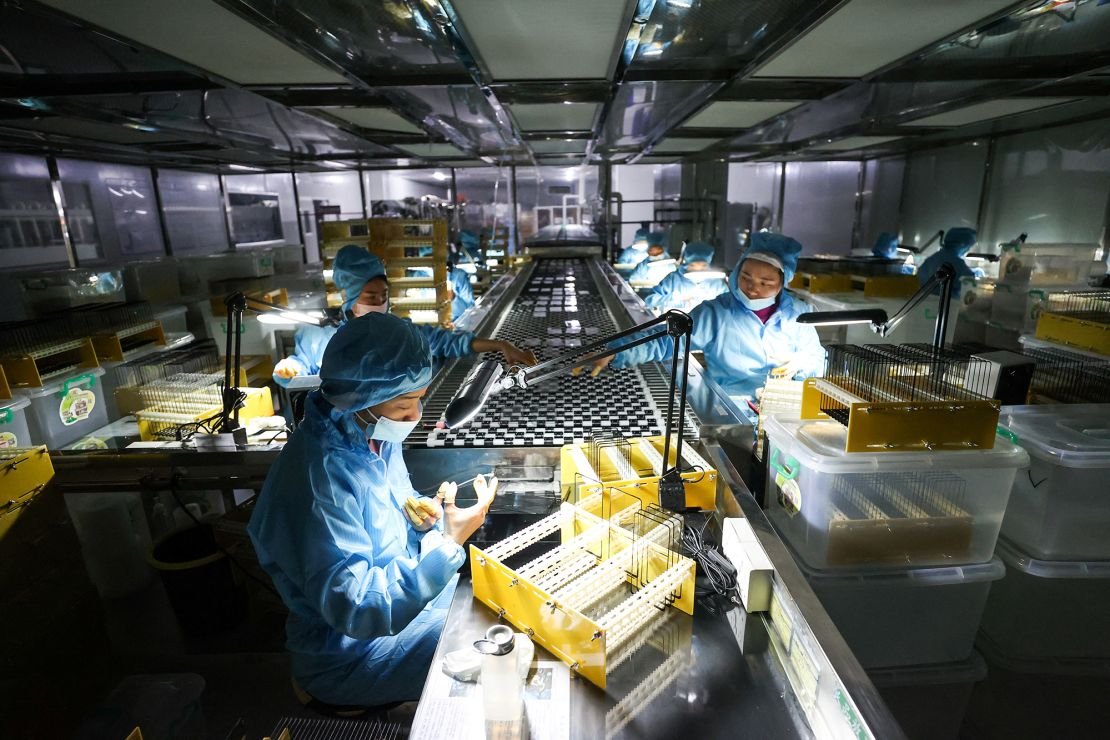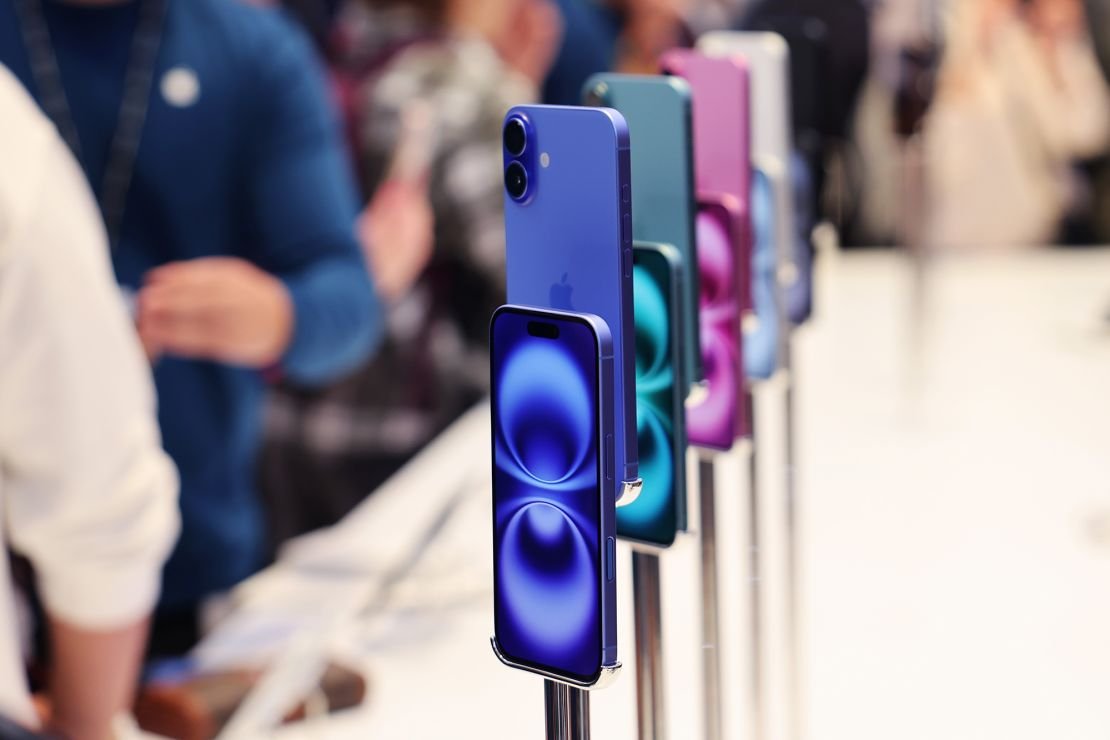New York
CNN
—
First, the bad news: Your next smartphone might be more expensive because of President Donald Trump’s recently imposed 10% tariff on Chinese imports.
But here’s the silver lining: It may be a while before smartphone prices start to rise – and those higher costs might not sting as much as expected.
There’s a good chance the phone you want to buy is already in the United States, whether it’s a new device sitting in a warehouse or a secondhand phone. And promotional discounts can mean new phones sometimes don’t result in higher price tags. In addition, Americans tend to purchase new phones via monthly installment plans through carriers and retailers rather than paying the full retail price up front. A hypothetical price hike of $100, for example, may only translate to an extra few dollars per month – still an increase, but perhaps a more palatable one.
The tariff on Chinese imports, which went into effect Tuesday and sparked a swift retaliation from Beijing, threatens to raise prices across a broad swath of everyday goods, from toys to jewelry and silverware.
Yet the technology industry is particularly susceptible given that US tech giants including Apple have key parts of their supply chains in China. And it shows in the numbers: Communications and computer equipment were the top two categories of goods imported to the US from China in 2024, according to US Department of Commerce data.

But analysts CNN spoke with don’t predict an immediate impact to smartphone shoppers, in part because price changes likely won’t be reflected in consumer prices until later this year.
“It depends on how long the tariffs last and how pervasive they are,” said Dan Ives, managing director and global head of technology research at Wedbush Securities. “I mean, right now we believe no price hike. I think it’s pretty contained.”
Many shoppers don’t buy phones at sticker price
US consumers tend to purchase new devices through monthly installments, according to data from Consumer Intelligence Research Partners, a research firm that tracks smartphone buying habits.
Specifically, 55% of phone buyers in the US – including those who purchase flip phones and basic mobile phones – purchase their device through an installment plan, the firm’s data indicated. Another market research firm, the International Data Corporation (IDC), also found that the majority of postpaid smartphones sold in the US are financed by carriers.
These payment plans typically allow consumers to pay off the cost of their device over a period of 24 or 36 months, with longer increments typically resulting in lower monthly costs.
When a high-profile phone launches, such as the iPhone 16, carriers usually offer additional promotions that allow shoppers to essentially upgrade for free as long as they trade in an old device.

However, such deals often come with caveats in the fine print, such as requiring that customers add a new line of service or sign up for a specific (and often expensive) plan.
“The mobile carriers are aggressively pushing the next phone on customers because they use it as a way to tie them to that carrier for a longer period of time,” said Josh Lowitz, partner and co-founder of Consumer Intelligence Research Partners.
Should carriers offer similar deals on upcoming phones, consumers may be able to sidestep price hikes entirely by swapping out their old device and signing up for the right data plan.
That’s if tariffs impact phone prices at all.
And if they do, consumers likely won’t see those price hikes until the fall or holiday season, when the latest batch of iPhones typically launches, says Ives. But tech companies typically decide on prices long before new smartphones land on store shelves, and pricing decisions come down to many factors beyond tariffs, including competition and component costs.
“These are cycles that are very complex, and a lot of the costs are already pre-arranged a year, (or) two years in advance,” Ives said.
More people are buying used smartphones
Not everyone buying a new phone is splurging on the latest model. Global shipments of officially refurbished and used smartphones grew by 6.4% in 2023 compared to 2022, according to numbers the IDC published in September.
That same report also suggested the secondary smartphone market has been growing more quickly than the market for new devices. In the US, 60% of consumers either purchased a used smartphone or are open to buying one, according to a separate IDC survey.
“Because of all these trade-ins, the inventory of used devices (is) much better,” said Nabila Popal, a senior director with the IDC’s data and analytics team.
That means those shopping for a used phone may have more options to choose from rather than being limited to devices that are several years old.
Apple, Google and Samsung typically release new phones in the summer and fall time frames to get ahead of the holiday season, which is likely when the impact of Trump’s tariff on phone prices will start to become clearer. But smartphone shoppers probably won’t have to worry anytime soon.
“I think the bark (is) worse than the bite when it comes to overall tariffs in China,” said Ives.


